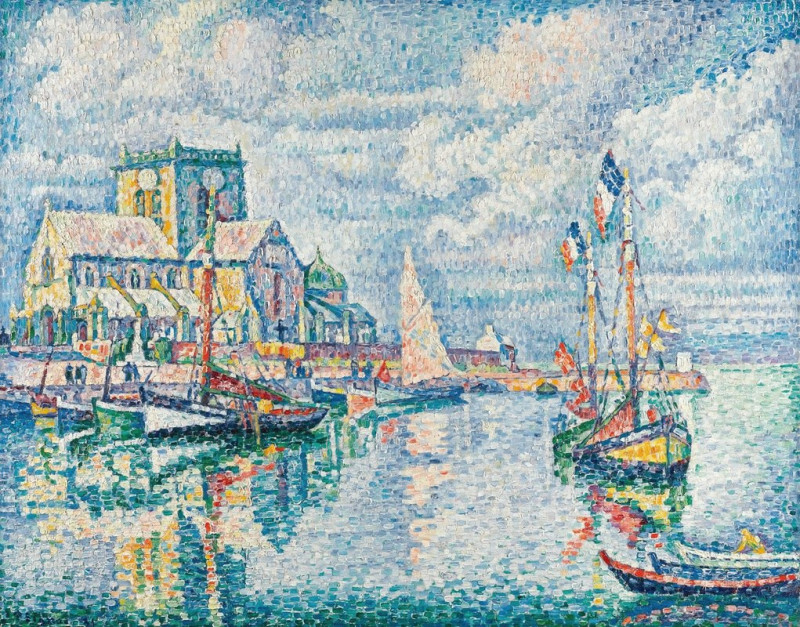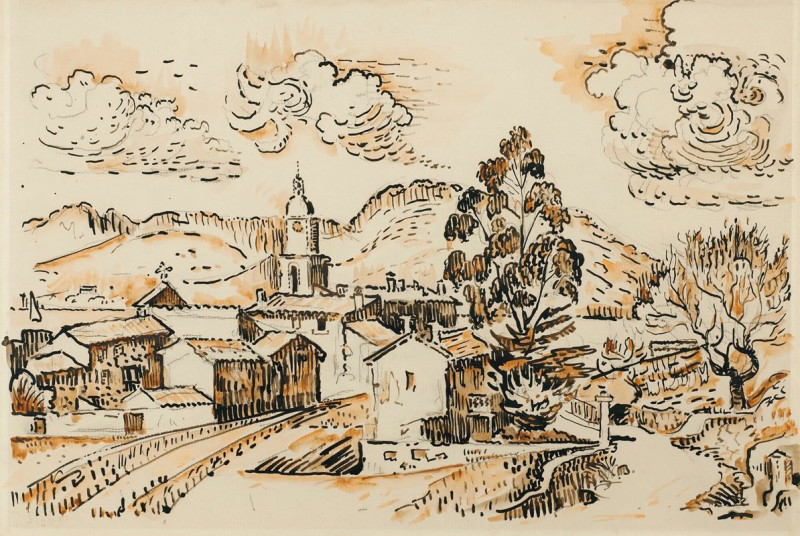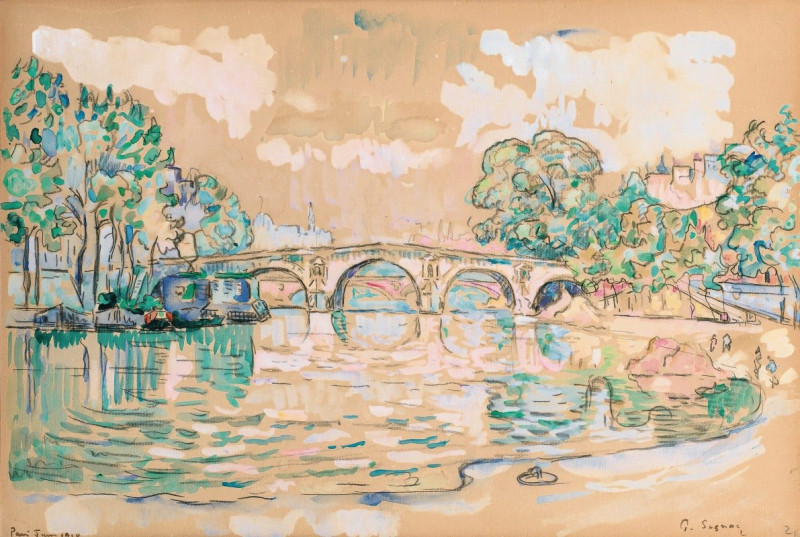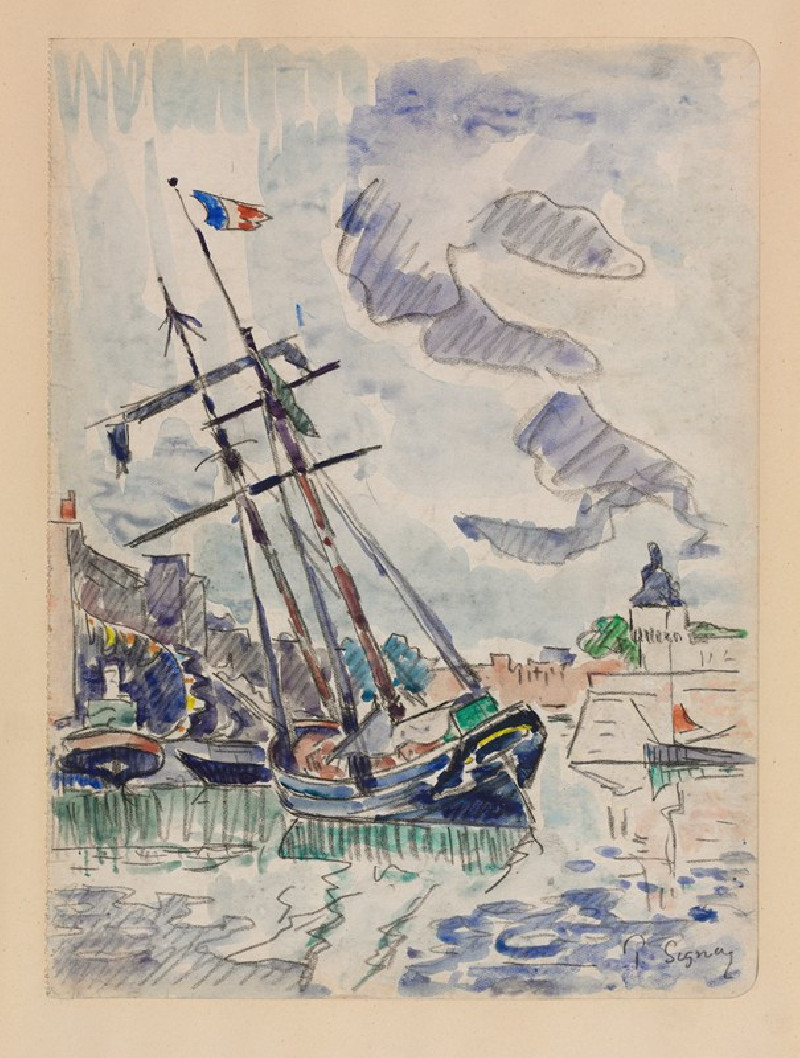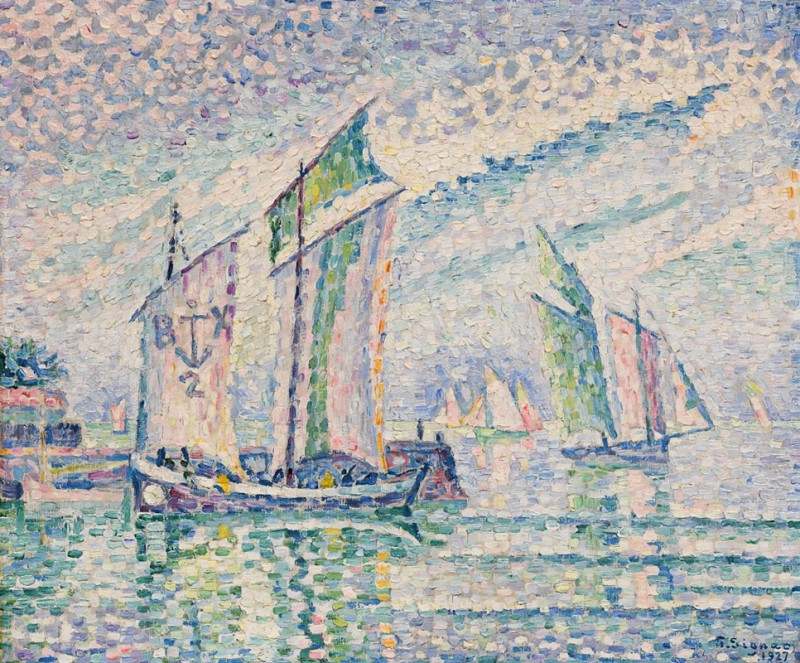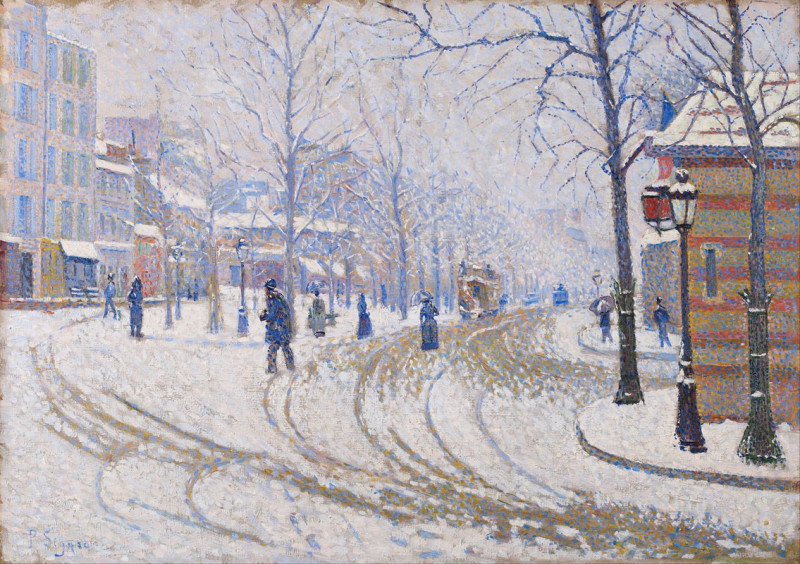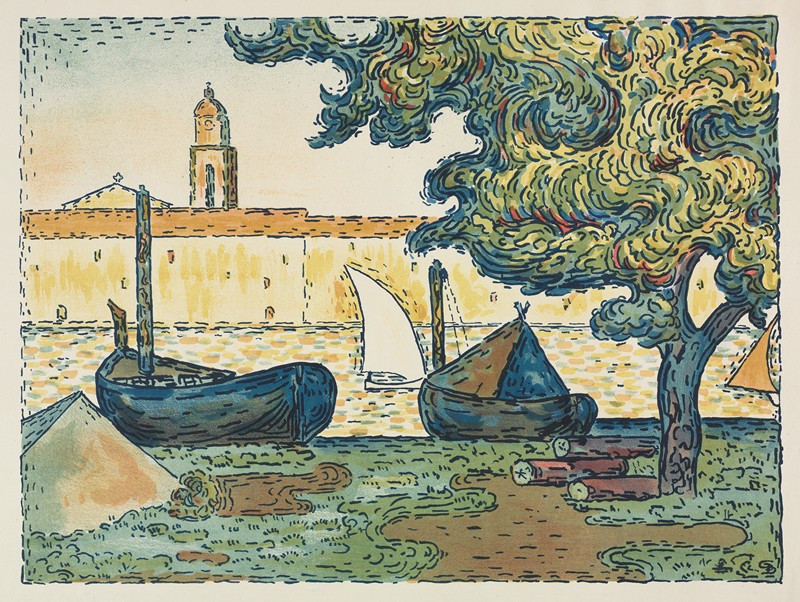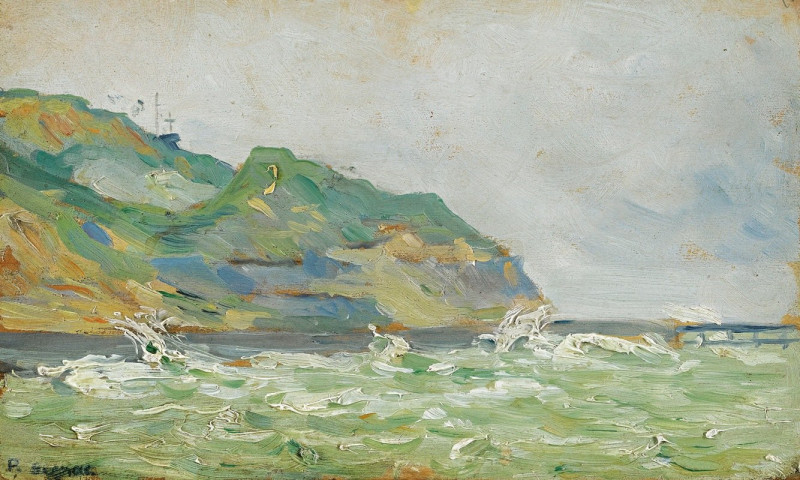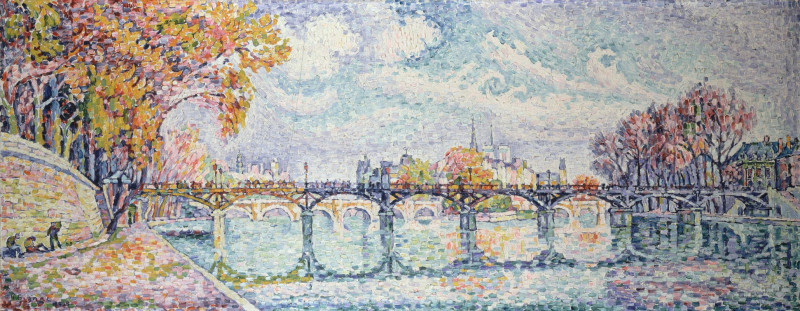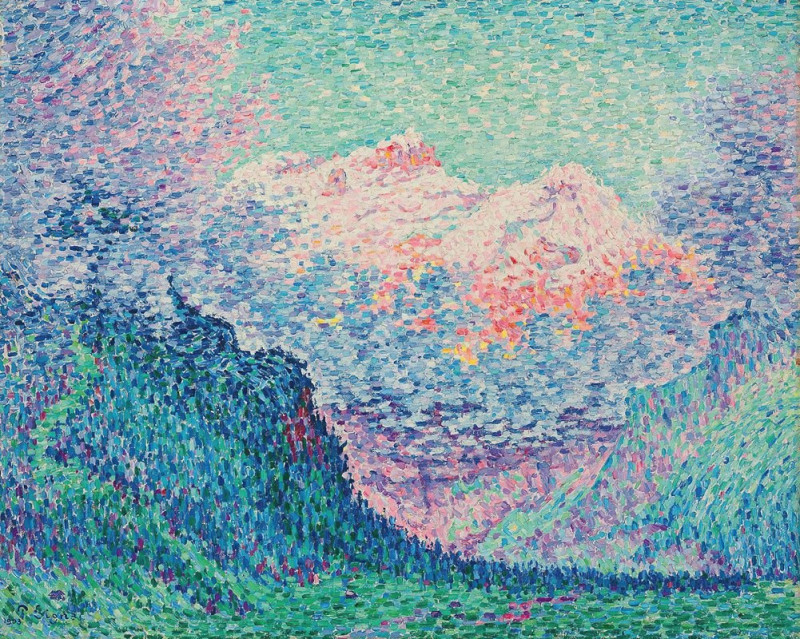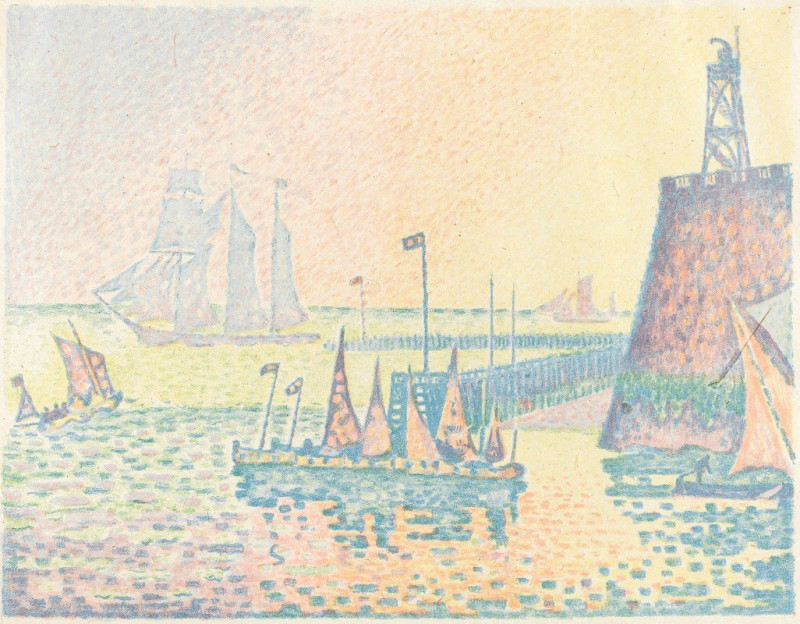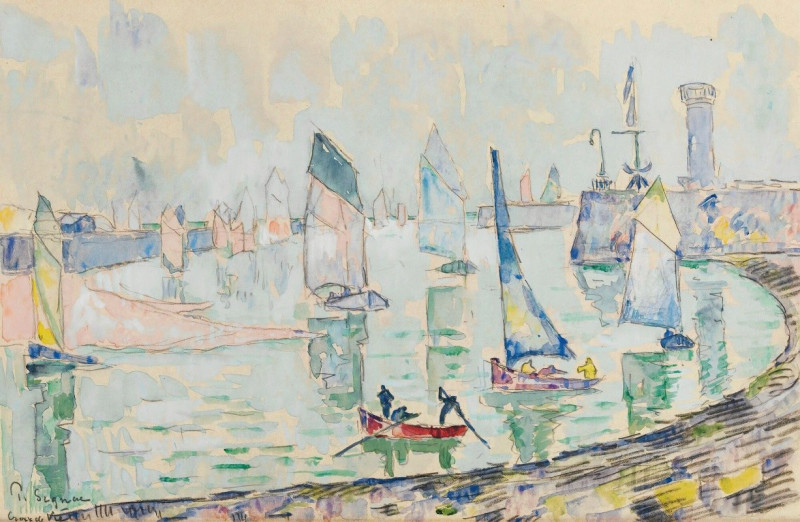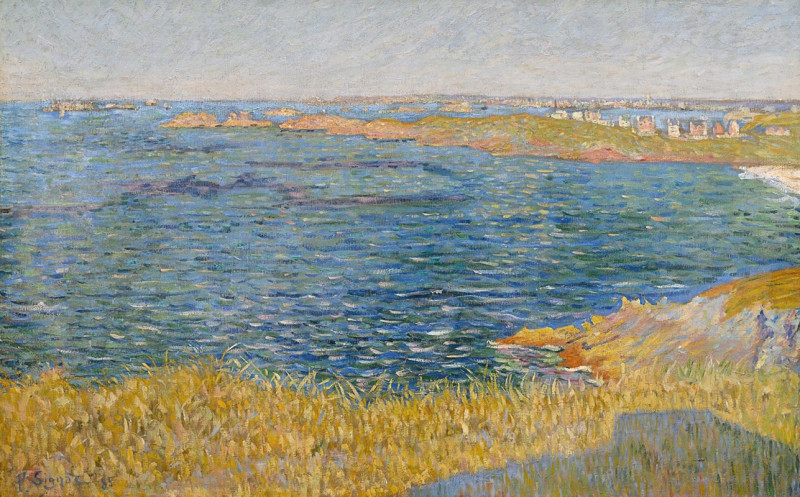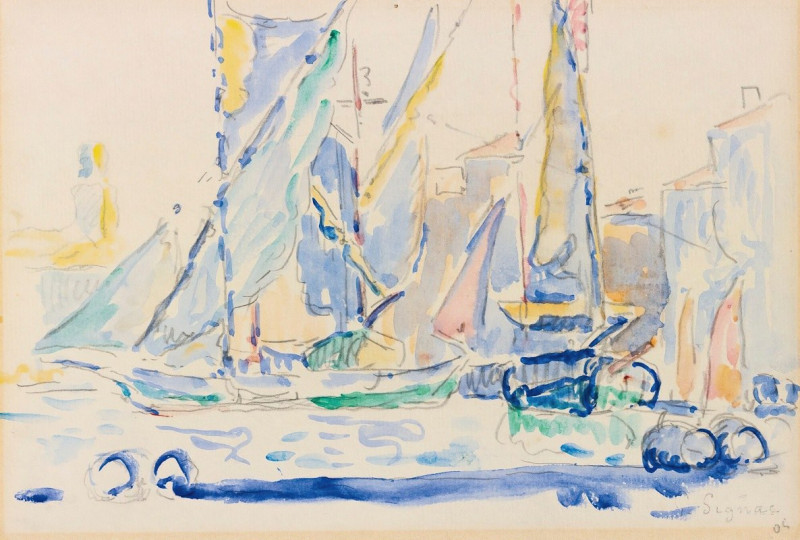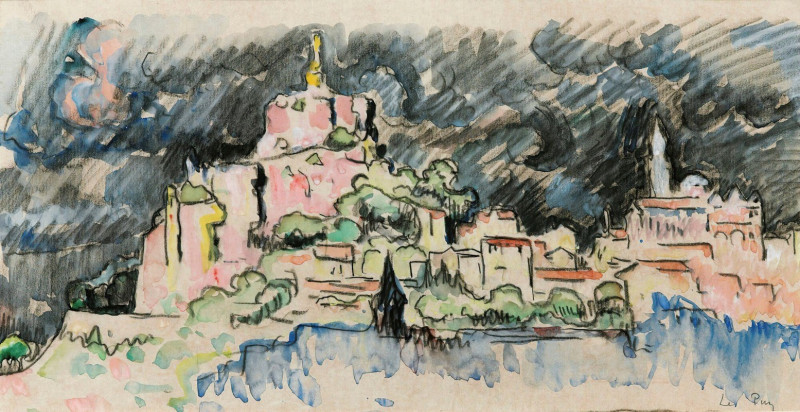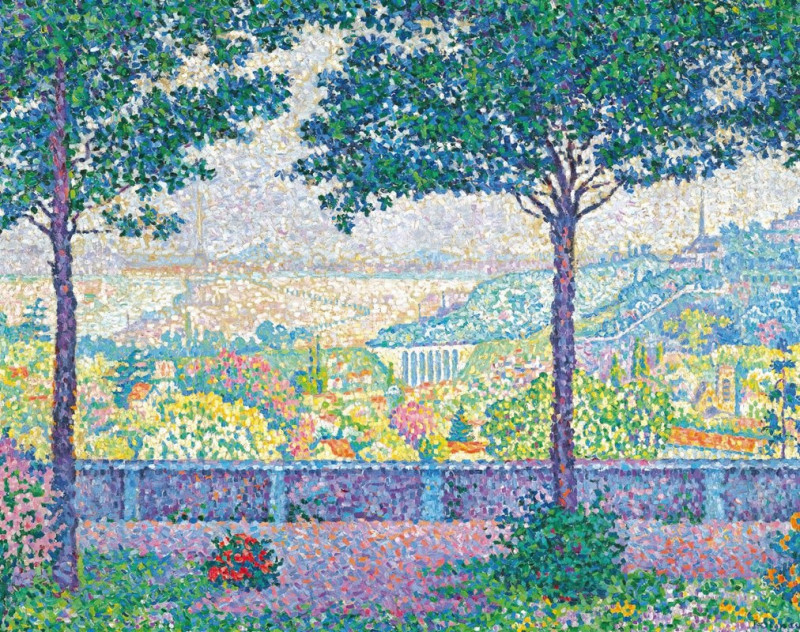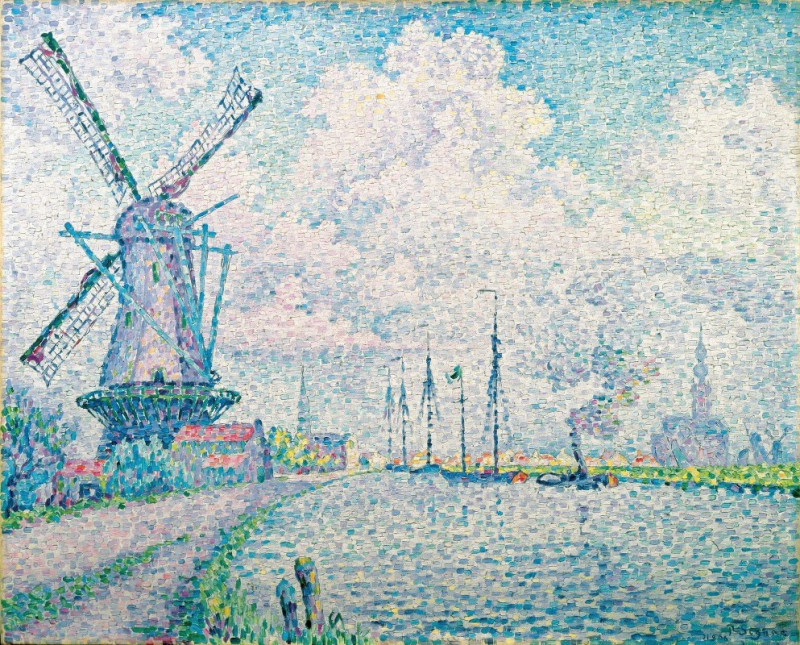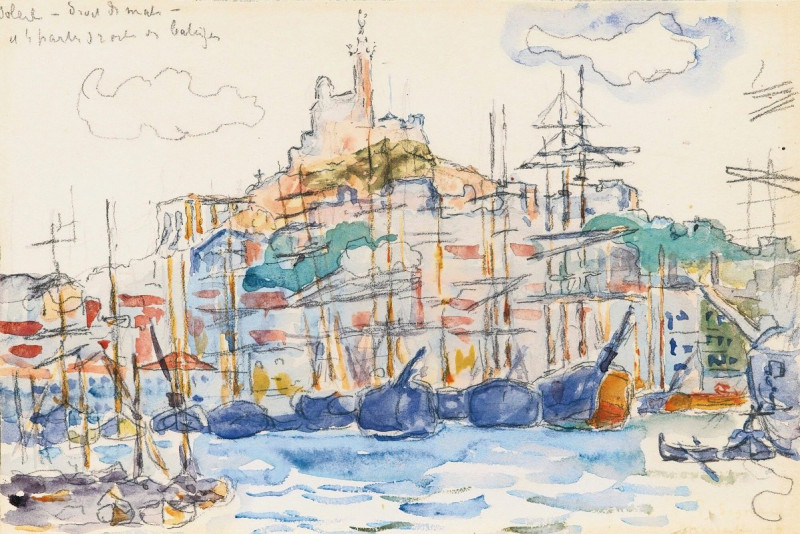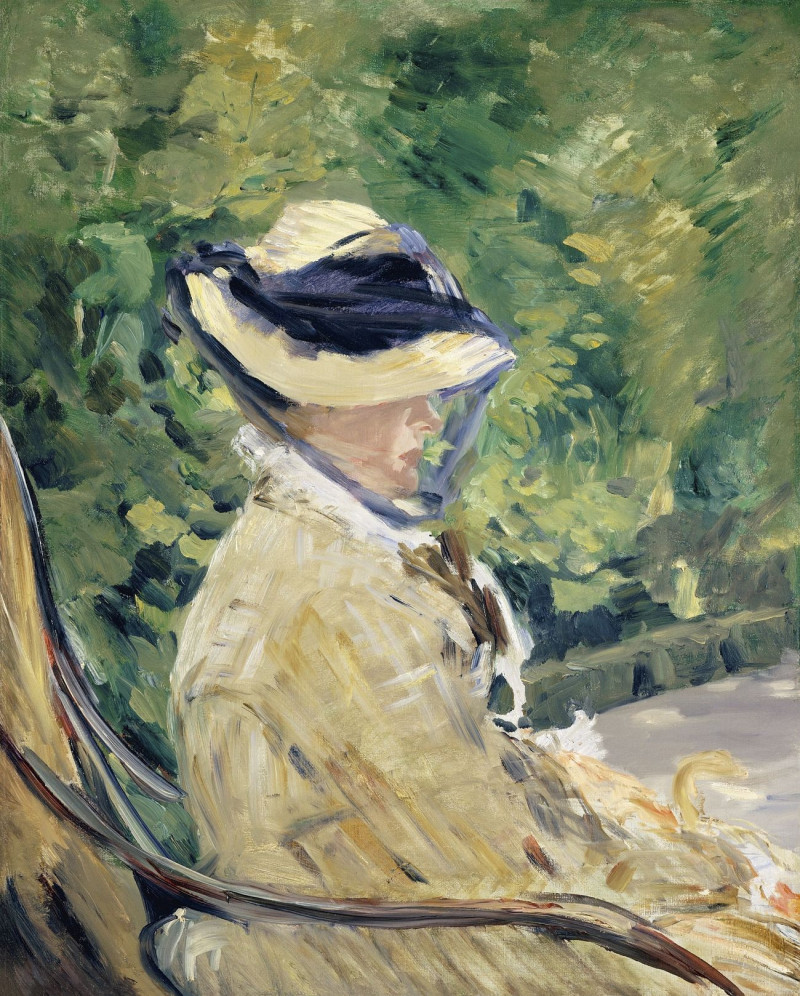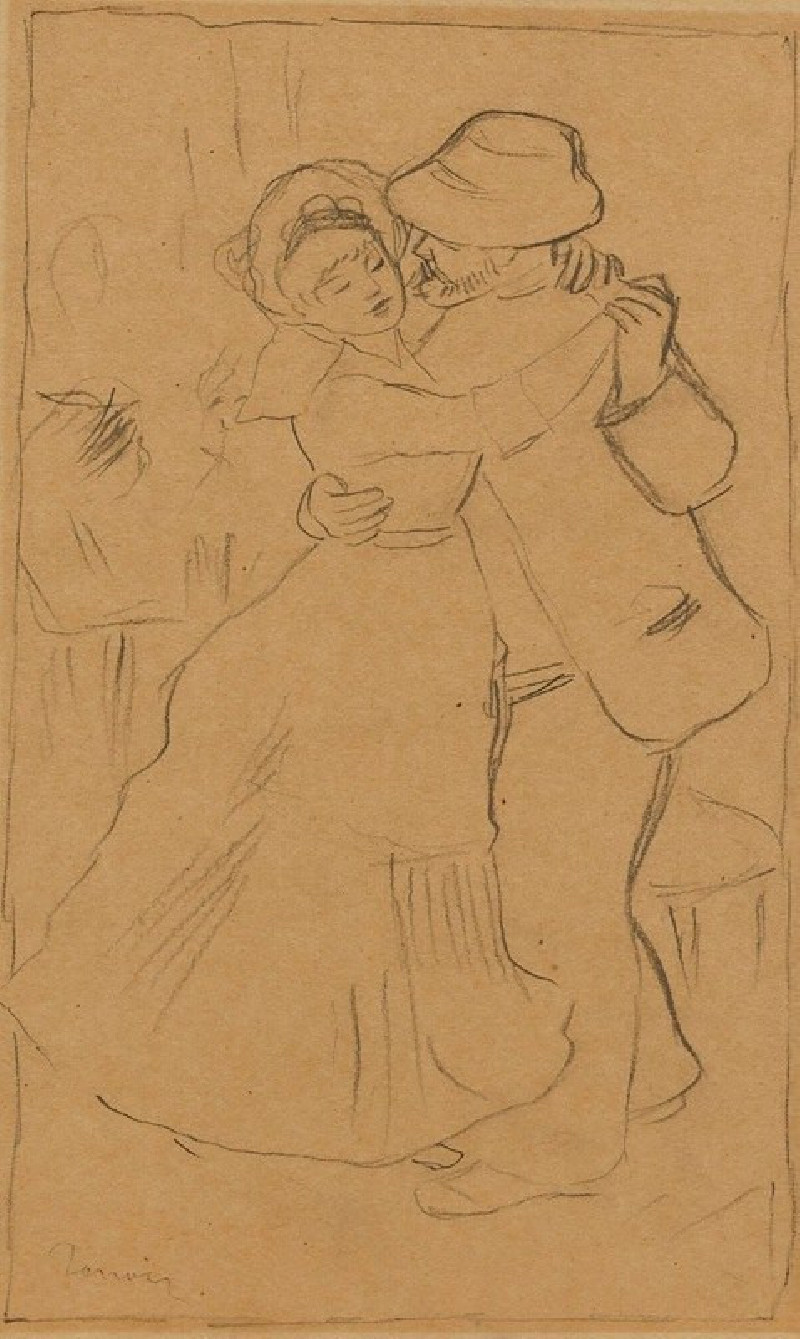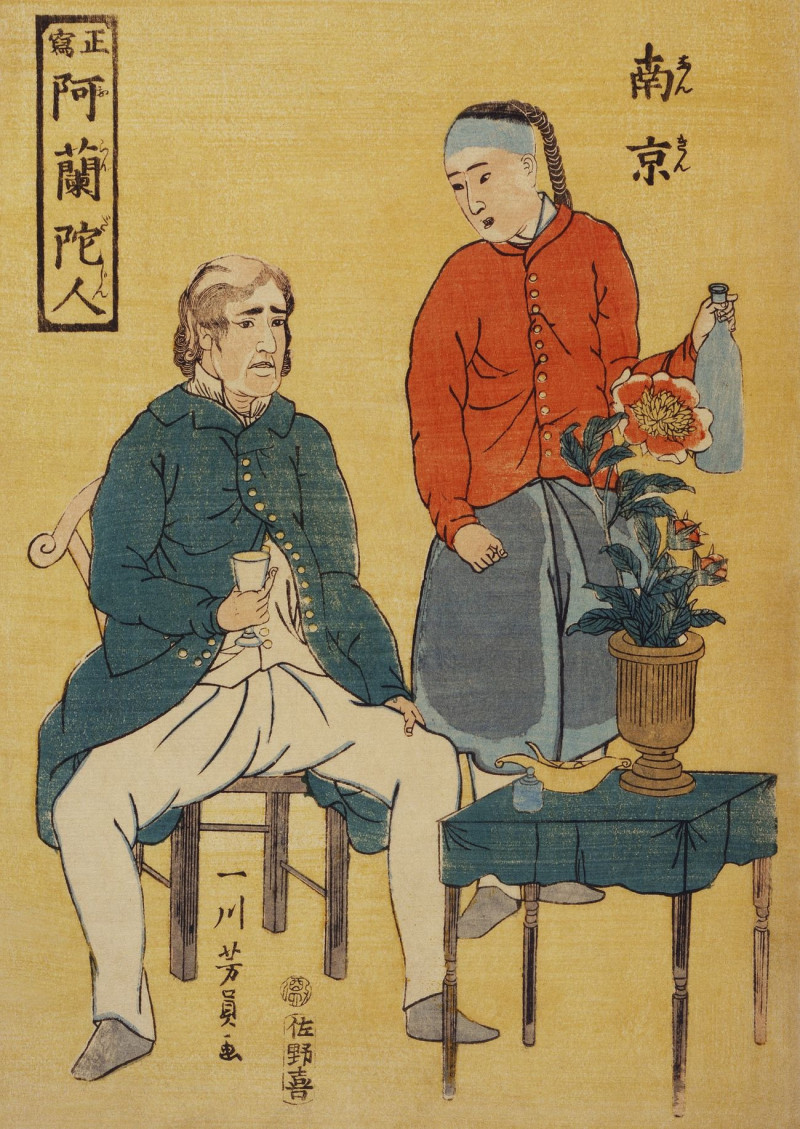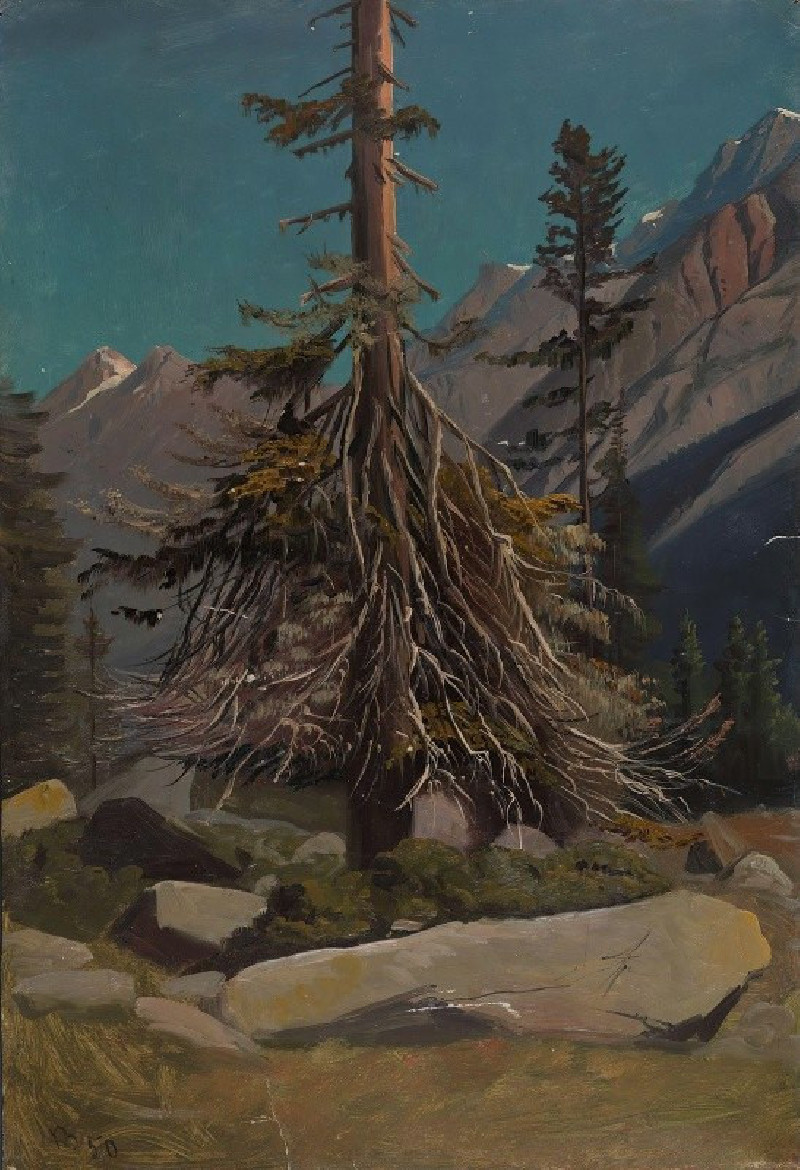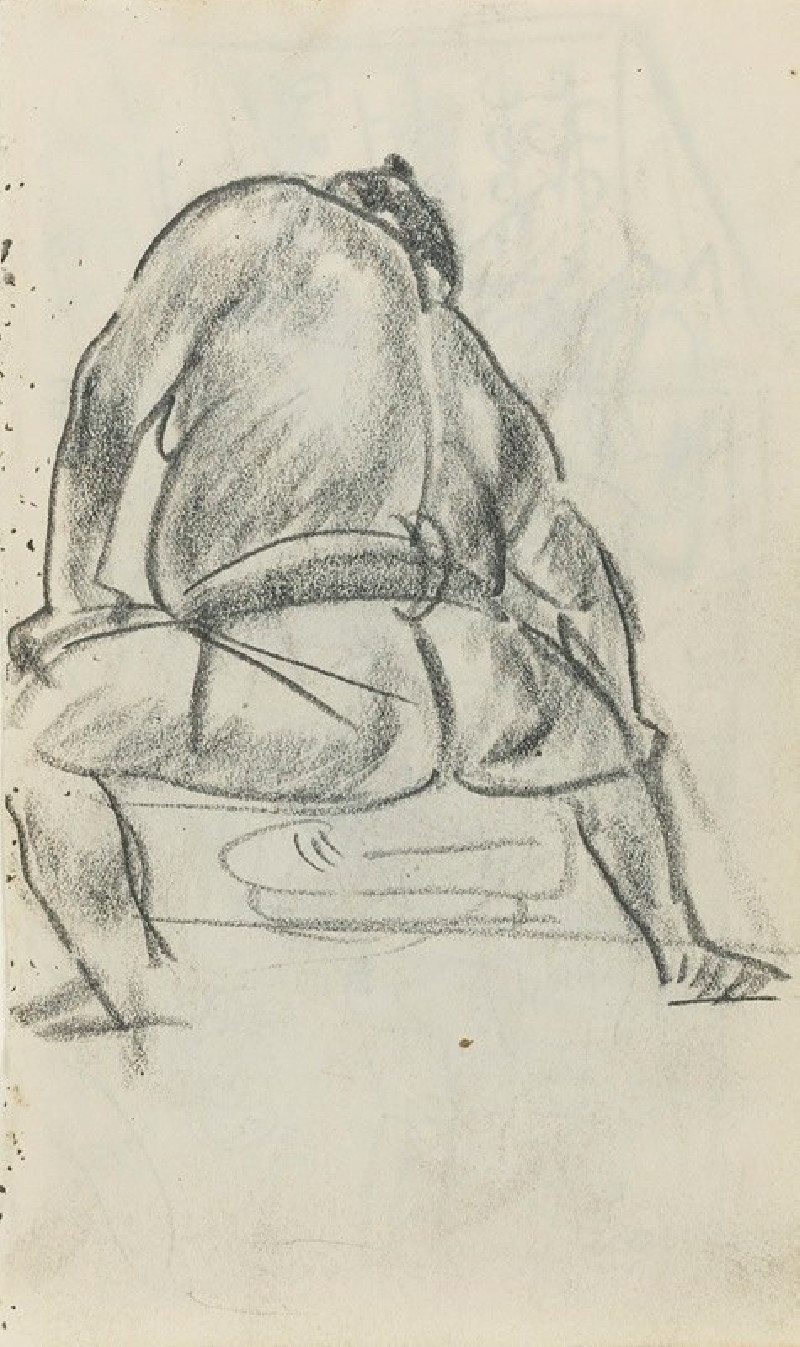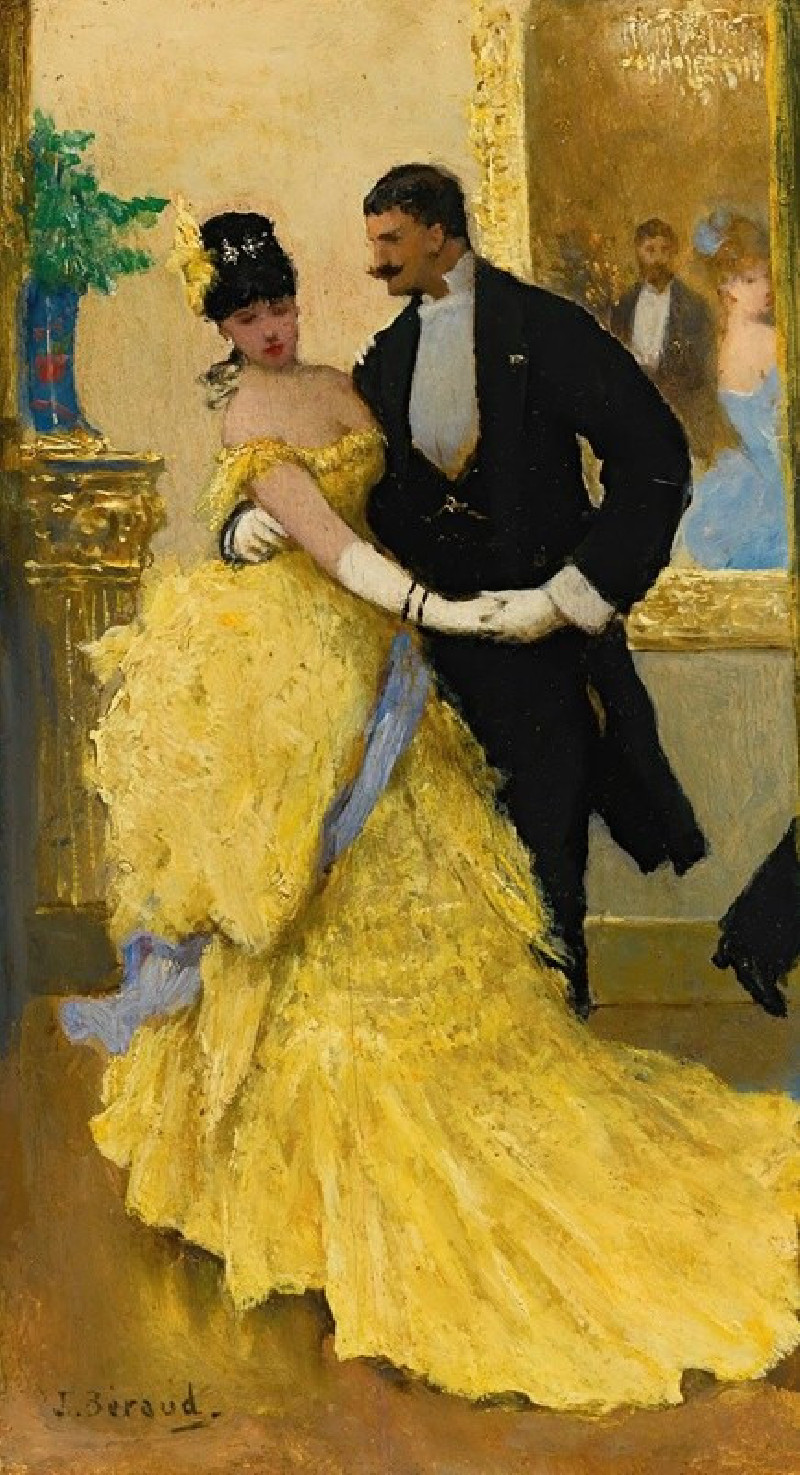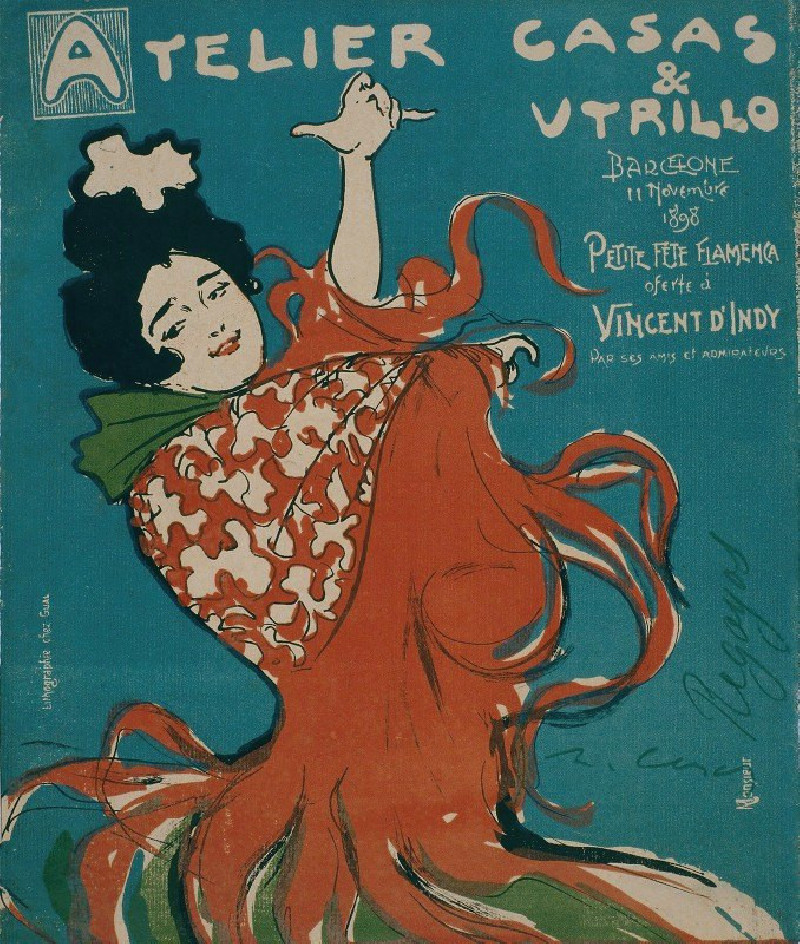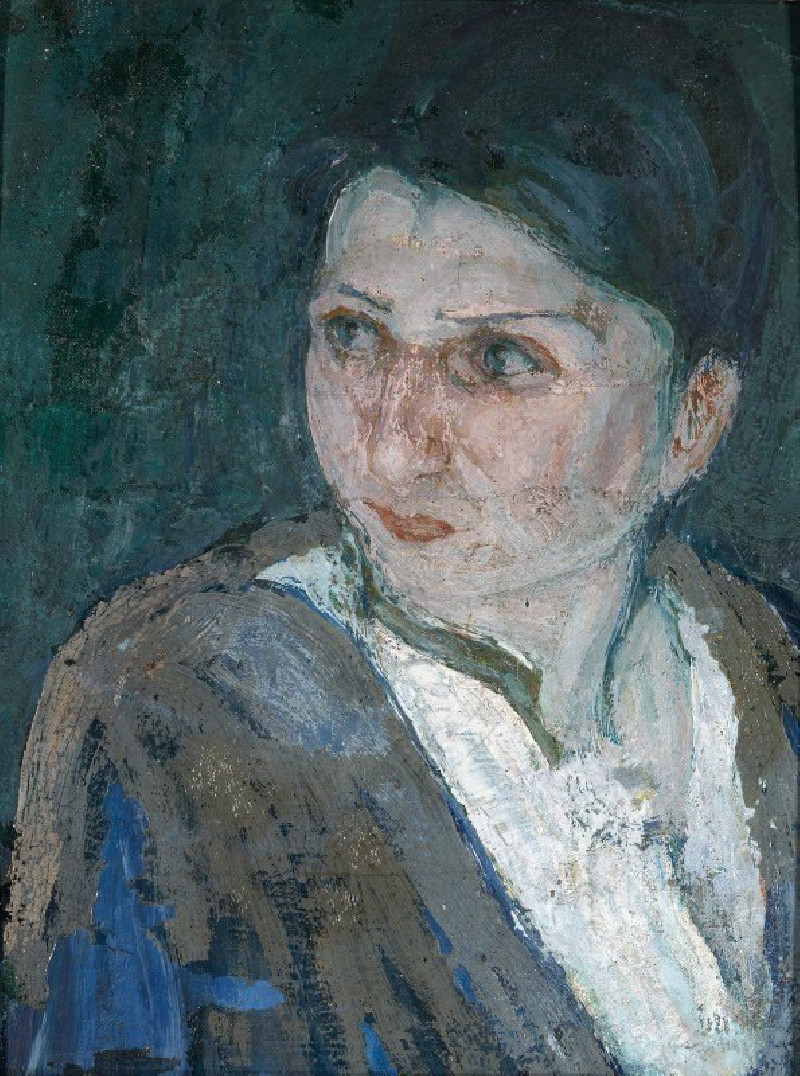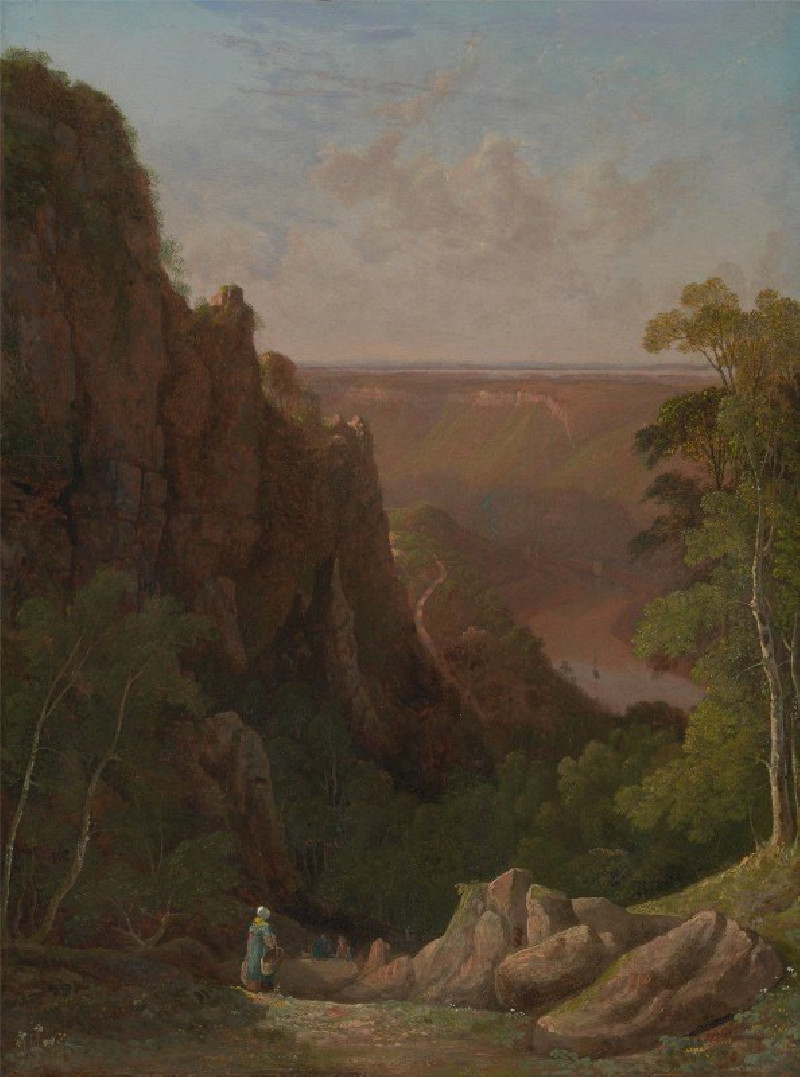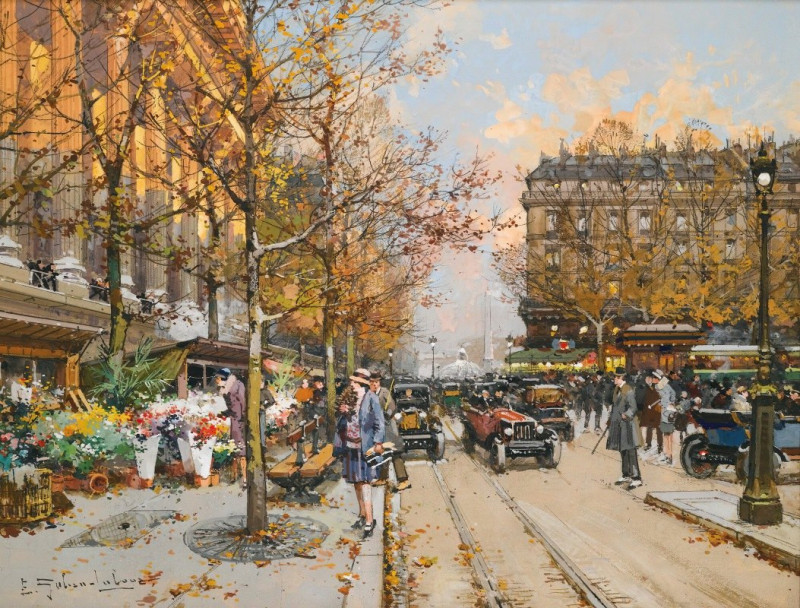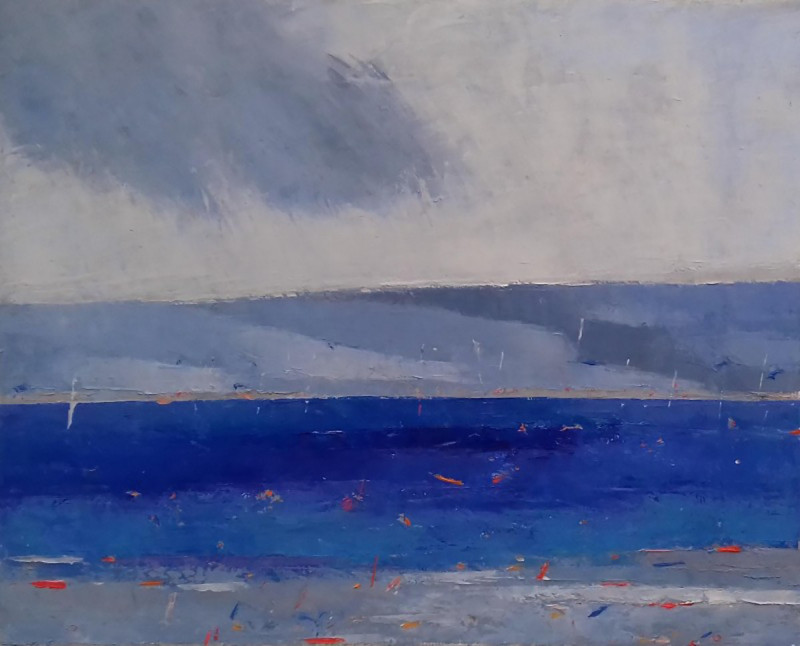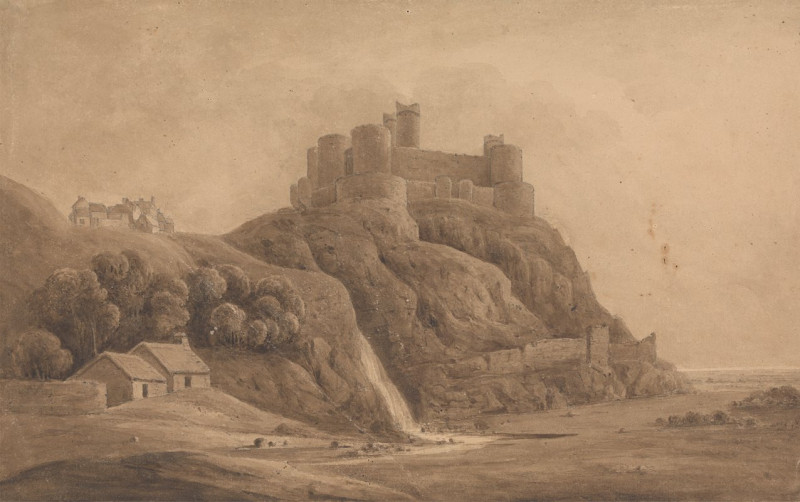Barfleur (1931)
Technique: Giclée quality print
Recommended by our customers
More about this artwork
Paul Signac's "Barfleur" (1931) is a masterful example of the pointillist technique, where tiny dots of pure color combine to create vivid and luminous scenes. This painting encapsulates the serene atmosphere of the small fishing village of Barfleur in Normandy, France.In this work, Signac portrays a bustling harbor scene, alive with the crisp colors of the boats and the reflection of light on the sea. The architecture of the village forms a sturdy backdrop, with its characteristic European coastal buildings bathed in subtlety shaded light. The church towers prominently, anchoring the composition and drawing the viewer's eye towards the center.The sea, depicted in varying shades of blue, teals, and whites, mirrors the sky and encapsulates the tranquil mood typical of a clear, sunny day. The boats, some moored and others preparing to sail, are rendered in bright colors—reds, oranges, and greens—that stand out against the more muted tones of the buildings and the sea.Signac’s technique of juxtaposing small, distinct dots of color not only enhances the overall vibrancy of the scene but also invites viewers to engage with the painting from different distances, seeing a blend of colors come together into a coherent image from afar, and a kaleidoscope of individual hues up close.This artwork is not only a beautiful rendition of a maritime landscape but also an exemplary display of Signac’s mastery over color and form, capturing the essence and rhythm of coastal life in early 20th-century France.
Delivery
Returns
Paul Signac (1863-1935) was a French Neo-Impressionist painter. Together with Georges Seurat, Signac developed the Pointillism style. He was a passionate sailor, bringing back watercolor sketches of ports and nature from his travels, then turning them into large studio canvases with mosaic-like squares of color. He abandoned the short brushstrokes and intuitive dabs of color of the impressionists for a more exact scientific approach to applying dots with the intention to combine and blend not on the canvas, but in the viewer's eye.

